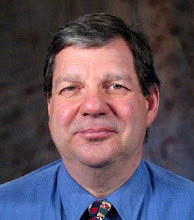The one-battery survey of Russian history and PC(USA) mission here
MOSCOW — It’s an 11-hour flight from Atlanta to Moscow. It is my first trip and the 16th for Gary Payton -- the PC(USA's regional liaison for Russia, Ukraine, Belarus and Poland -- so on the way over I asked for a brief summary of Russian history as background for the PC(USA)’s mission efforts here.
As the PC(USA)’s regional liaison for Russia, Ukraine, Belarus and Poland, Gary speaks frequently to PC(USA) congregations and other groups on this subject, using a power-point presentation. Thus, he shared his presentation with me … as long as his laptop battery lasted.
The Union of Soviet Socialist Republics, which collapsed in 1991, consisted of 15 “republics,” which now number 15 independent states, thus the name Commonwealth of Independent States. This trip will focus on mission and ministry in Russia — formally titled the Russian Federation.
For centuries, Russia has been a land of stark contrasts between the ruling elite and the rest of the population. In recent years a middle class has begun to emerge, but Russia is still a land of stark contrast between the haves and have-nots.
Another dominant factor in Russian life is the legacy of World War II. To Americans, with the dying off the generation that fought the war that history is increasingly “ancient.” But for Russians it’s as if the war happened yesterday. No family is untouched.
At least 20 million Russians died as a result of that war, compared to approximately 650,000 American dead. Monuments to the dead and to various war heroes dot the landscape of Moscow and are a constant reminder of Russia’s long history of being invaded, dating to the Polish invasion in the 1600s.
Throughout that history, Christianity has struggled, survived and even occasionally thrived here since its introduction in 988 A.D. when Prince Vladimir of Kiev — today the capital of Ukraine — converted after his emissaries returned from Constantinople (now Istanbul). From that date on, Orthodox Christianity came to permeate Russian culture until the communist revolution in 1917.
Russia is currently experiencing a spiritual and religious renaissance, with crowded churches, a growing number of evangelistic and social ministries and the slow but steady restoration and reconstruction of houses of worship that were destroyed during the communist era.
We have visited two of those churches — the magnificent Cathedral of Christ the Savior, the “central” cathedral in Moscow, which was blown up by Stalin in 1938 and rebuilt almost exactly between 1994 and 1997, and the Kazan Cathedral on the edge of Red Square, which was burned to the ground in 1936 and also rebuilt in the mid-1990s.
Worship at Kazan on Sunday morning (Feb. 3) was packed — worshipers come and go during the two-hours-plus service — and we had to wait several minutes to get into the sanctuary. The Orthodox liturgy, lived out to its fullest here, is complex, mysterious and deeply moving. The mind cannot comprehend it, but the heart feels it richly.
Orthodox church leaders look back on the communist era and liken it to the Babylonian exile of the Bible. The analogy is apt and now the church here is faced with the return from exile, with all of its challenges, promise and hopefulness.
This is the context in which PC(USA) missionaries here are accompanying our Russian partners in the rebuilding, not just of churches, but of vital social and evangelistic ministries that address the myriad physical and spiritual needs of the Russian churches and people.
The PC(USA) stood with the Russian churches during the limited opportunities of the communist era: through World Council of Churches gatherings, Presbyterian Peacemaking travel/study seminars, and through National Council of Churches programs, in which renowned Presbyterian minister Bruce Rigdon was a leading figure.
Today, the PC(USA) partners with the Russian Orthodox Church, the Baptist Union, and the Evangelical Lutheran Church of Russia and Other States (ELCOS). The four “pillars” of PC(USA) engagement here are:
Twinning (matching PCUSA and Russian congregations for mutual mission);
Theological and Christian education programs;
Evangelism to unreached people groups; and
Social outreach ministries.
Those pillars result in PC(USA) mission activities such as creation and coordination of twinning arrangements, teaching and administration in Christian schools and seminaries, publication of Christian education materials and training of children’s ministries leaders, outreach ministries to immigrant and homeless populations, HIV/AIDS and drug abuse and alcoholism ministries, work with orphanages and other programs for children at-risk and “frontier” evangelism to people groups in Siberia and other hinterlands that have never heard the gospel before.
PC(USA) partners such as Presbyterian Frontier Fellowship and the Outreach Foundation are also actively engaged here, working together to make Presbyterian mission in Russia more effective, better supported financially and responsive to our partners here.
In coming days, you will be hearing more about our 10 PC(USA) mission personnel and their ministries here, as well as our partners in the Russian churches here. Those stories will appear here and on the Presbyterian News Service Web site, www.pcusa.org/pcnews between now and mid-February.
Subscribe to:
Post Comments (Atom)

No comments:
Post a Comment